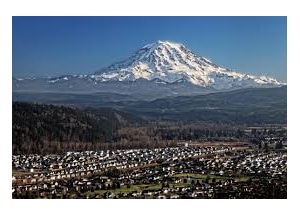Hernia
Surgical Solutions.

Call 253-840-1999
Operators standing by! 24-hour scheduling. Appointments often available next day.
What is a hernia?
Think you have a hernia? If you notice a bulge and pain, you might.
Strain on abdominal muscles leads to a hernia. They are more common in adults, and sometimes a side effect of aging, wear and tear.
A hernia develops when the outer layers of the abdominal wall weaken, bulge or rip. The hole in this outer layer allows the inner lining of the cavity to protrude and form a sac. Any part of the abdominal wall can develop a hernia, but the most common place is the groin.
Inguinal hernias account for 80 percent of all hernias. Although most common in men, groin hernias can also occur in women.
What leads to hernias?
Activities and conditions associated with hernia symptoms include:
- Lifting heavy objects.
- Sudden twists, pulls, or muscle strains.
- Marked gains in weight, which causes an increase in pressure on the abdominal wall.
- Chronic constipation, which places a strain on the abdomen while using the toilet.
- Repeated attacks of coughing.
How do I know if I have a hernia?
Signs and symptoms of hernias can include:
- Visible bulges in the groin, abdominal wall or scrotum.
- A feeling of weakness or pressure.
- A burning feeling at the bulge.
- A gurgling feeling.
Sometimes the onset of a hernia is gradual with no symptoms other than a bulge developing. Other times, the hernia will occur suddenly with a feeling something has given way. Pain or discomfort can accompany this feeling.
A hernia is called reducible if a surgeon can push the protruding sac of tissue back into place inside the abdomen. If it’s not possible for the surgeon to push back the hernia, it is called irreducible, incarcerated, or imprisoned.
In some cases, an irreducible hernia gets pinched, cuts off the blood supply and the tissue swells. Rapidly worsening pain or a tender lump is a signal the hernia has strangulated. When strangulation occurs, the tissue can die quickly and become infected.
Within hours this condition can lead to a life-threatening medical emergency.
Learn about other types of hernias.
Why should I pursue surgery now?
If you know you have a hernia problem, you can take control now. Planning your own surgery means lower costs, timing that works for you, and less risk for complications. Why wait for the next unpleasant surprise? Call Cascade Hernia & Surgical Solutions today!
Surgeons perform a variety of techniques to repair hernias. You should talk with Dr. Wright to determine what type of repair method is appropriate for you.
The Mesh-Free Method. The surgeon makes an incision over the site of the hernia. The protruding tissue is returned to the abdominal cavity, and the sac that has formed is removed. The surgeon repairs the hole or weakness in the abdominal wall by sewing strong surrounding muscle over the defect.
Tension-Free Mesh Technique. The surgeon makes an incision at the site of the hernia and a piece of mesh is inserted to cover the area of the abdominal wall defect without sewing together the surrounding muscles. Recovery is swift, and the likelihood of the hernia recurring is small. The body’s natural tissues generally accept this safe surgical mesh.
The Laparoscopic or Robotic Method. This approach is often referred to as minimally invasive, but it requires deep anesthesia with paralysis and involves more extensive dissection within the abdominal cavity for repair. Additionally, it necessitates making three additional incisions in the abdominal wall, which carries a risk of developing incisional hernias later. Lighted fiberoptic visualization is used, and this method typically requires a larger piece of mesh compared to an open procedure. However, it can be beneficial in cases where multiple hernias need to be addressed. Always performed in a hospital setting, robotic surgery results in substantially higher costs without offering measurable benefits over traditional laparoscopic procedures—except in highly complex abdominal wall reconstructions.
Where can I go to get help?
Cascade Hernia & Surgical Solutions specializes in the repair of all types of hernias. Getting your surgery here means more convenience, privacy and individual attention at a lower cost than in a hospital setting. Ask your physician if you are a candidate for outpatient surgery.
Preparing for the Operation
Unless the hernia is strangulated, hernia repair typically is an elective operation. Only you can decide whether you ought to proceed with the repair. But it’s important to understand the hernia is not going to heal by itself, pain may increase in the area of the hernia, and it will usually increase in size over time.
Prior to surgery, you may be given standard tests to measure your complete blood count and electrolyte levels, as well as an EKG. Your surgeon may require additional studies depending on your condition and age. You may be given a local, spinal, or general anesthetic depending on your surgeon’s preference, your age, your state of health, and the procedure’s degree of difficulty. While most procedures generally take less than two hours, your entire time spent at the center—from pre-op to recovery—may be around five hours.
Outpatient Surgery
Unless you have a health concern, generally the surgeon can perform the hernia repair on an outpatient basis. On the day of your operation, you should wear loose-fitting, simple clothing to the hospital, such as a sweat suit and slip-on shoes. That way, upon discharge, you will be able to get dressed easily without too much strain or discomfort. Generally, you should not eat on the morning of your operation. You should have a friend or relative drive you home after the operation.
Complications Are Few
As with any operation, infection and bleeding can occur, or the intestine or bladder can be injured during the operation, but a hospital stay usually isn’t necessary. Scar tissue may also form. If infection does occur, your doctor will prescribe antibiotics to treat it.
Recovery
As with any operation, the amount of pain individual patient’s experiences varies. A patient’s discomfort also depends on the location and type of hernia, as well as the technique used to perform the repair. Generally, you will have some difficulty walking the first few hours after the operation, and you will need to use the handrail when climbing stairs for the first couple of days. While bathing, it is important to avoid wetting the incision site. Sexual activity is usually too uncomfortable to enjoy the first week or two. Dr. Wright will advise you regarding heavy lifting, jogging, or strenuous exercise. You should be able to drive your car within a few days. Depending upon your occupation, you can expect a recovery period lasting from one to six weeks.
Leaders in Alternative Pain Management
At Meridian Surgery Center, we use long-acting local anesthetics to provide sustained pain relief for most patients for up to three days after surgery. These advanced products—Exparel, Xaracholl, and Zen Relief—are now widely covered by most insurance plans and are routinely used in our procedures to minimize post-surgical pain and enhance recovery.
What Kind of Hernia is Bothering You?
Want the skinny on hernias? The types are as unique as the situations that cause them. Learn more about the most common abdominal hernias:
Inguinal hernias occur in the groin, the area between your abdomen and thigh. The most common type of hernia in adults, they affect men, and less frequently, women. With an inguinal hernia, the intestine protrudes through a weakness or a tear in the abdominal wall muscle creating a visible bulge and sometimes pain. In men with an inguinal hernia, the sac protrudes into the groin toward—and sometimes into—the scrotum. Pain from an inguinal hernia can be a constant, daily pain or can occur once in a while. Hernia pain may be a symptom of nerve compression, which can lead to permanent damage.
Ventral hernias most commonly develop in the abdominal wall where an area weakens and develops a tear or hole. Abdominal tissue or part of the intestines may push through this weakened area, causing pain and potentially serious complications. Ventral hernias may develop as a defect at birth or strain on the abdominal wall.
Umbilical hernias occur in or around the navel, or umbilicus. This type of hernia may result from congenital factors. Umbilical hernias may also result from sudden or repeated strain or stress on the abdominal muscles. In adults, as with any hernia, an umbilical hernia will not heal or go away but grows larger with time; incarceration or strangulation can occur. With infants, however, an umbilical hernia may slowly close, delaying surgery up until age 4 or 5.
Incisional hernias can occur in the area of any prior surgical incision or scar. It can develop soon after the original surgery or later. Swelling or bulging near the area of the prior incision accompany this type of hernia, typically along straight incisional scars running down from the breastbone to the pubic area. Pain may be an early warning sign of an incisional hernia, as the patient may not experience any initial presence of a bulge.
Femoral hernias occur when abdominal contents are forced through the femoral canal. Typically, this type of hernia forms near the crease of leg in the abdominal region but in an area relatively lower than the more common inguinal hernia. Women tend to have a slightly larger femoral canal because of the angle and shape of the pelvis. Femoral hernias are more likely to become incarcerated or strangulated because of their location. Femoral hernias appear similar to inguinal hernias, so you need a hernia specialist to confirm diagnosis.
Epigastric hernias occur between the lower part of the breastbone and the naval. A weakness or opening in the fibrous tissue of the abdomen causes this type of hernia, which usually consists of fatty tissue and rarely contains intestinal tissue. Although generally small in size (no bigger than a golf ball), epigastric hernias can easily become pinched in their small area, sometimes causing a great deal of pain.
Hiatal hernias form when the upper portion of the stomach slides into the chest cavity through the normal opening created by the esophagus, or food pipe. Hiatal hernias may be associated with heartburn.

Mount Rainier (elevation 1400 ft) is a geological “hernia.” There is a hole in the Earth’s crust that has allowed the magma to erupt through and build a large mound. At any time, without notice, it can erupt into a catastrophe. A hernia is a hole in the abdominal wall muscles that allows the intestines to bulge through causing an external bulge. It also can erupt into an emergency!
